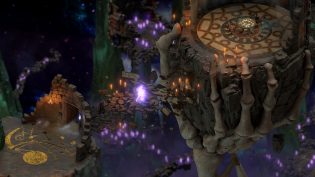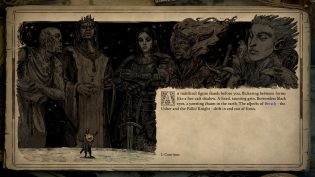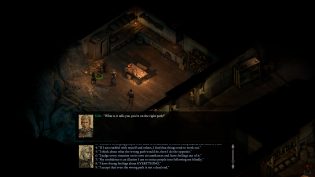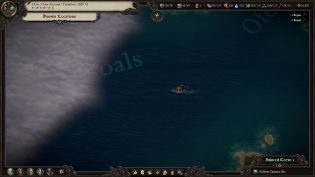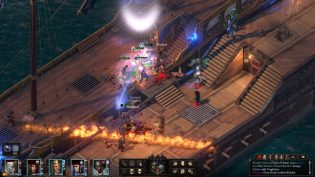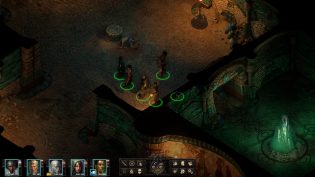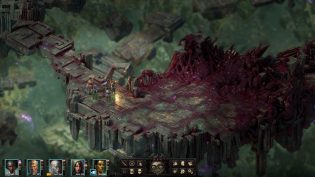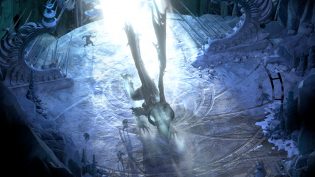I remember being surprised at the announcement of Project Eternity Kickstarter campaign, the working title for the original Pillars of Eternity. A surprise that quickly turned to throwing money into the monitor. Obsidian Entertainment have rarely disappointed before and they most certainly didn’t with PoE, when I eventually got around to play it. In fact, I’d say that it remains one of my absolute favorite story driven RPGs, just based on the fact how it managed to perfectly merge the simple sword and sorcery of the classic Baldur’s Gate (and older fantasy RPG titles), with a genuinely interesting and nuanced world. It was a game full of memorable ideas, characters and lots of choices that made me think hard, carefully weighting the options and bringing myself and my own morality into the game world.
So of course I backed the Pillars of Eternity II campaign as soon as it started. Obsidian Entertainment have rarely disappointed…
Imagine if The Hobbit followed The Lord of the Rings, or better yet, Silmarillion (in whatever finished form it might’ve been originally intended) as an official sequel, a new tale in the world you fell in love with. How hard it would be for you to push past the fact that the tale is so much simpler and so much more primitive now, to finally accept that it’s a really fine book? That’s the difficulty of playing Pillars of Eternity II: Deadfire. The game even starts with a reminder of what happened in the first game as part of the save import (though you can skip most of it with an old save file) – a lot of things happened, a lot of complex interesting things. It’s sometimes hard to remember all the choices I’ve made, but going through the opening is a great reminder of what an amazing adventure the original game was.
This sequel, though, is a rather simplistic and primitive pirate adventure game, still set in the same world, still seemingly full of rich history and difficult to unravel mysteries of old and present and a rather unfortunate political and social situation. There’s a rather big (and barren) map of the Deadfire archipelago you will spend your game time in, slowly sailing from one remote land to another. Your main goal here is to track down a gigantic statue of adra, currently inhibited by a god, who’s slowly but surely marching somewhere, crushing everything in his path. And one of the biggest issues of the game can already be addressed here – this setup explained in the opening hour of the game is about half of its entire main storyline. It’s a plot with grand implications for the world and it will take you many many hours to complete (took me under 60 hours with DLCs), but it’s so bare bones and so shockingly brief, it’s hard not to get annoyed at the second big issue of the game.
Going back to the Hobbit comparison, unlike the JRRT tale, a lot of the writing in Deadfire is incredibly weak by Obsidian standards. Most of the stories in the game aren’t just predictable and run of the mill for an RPG, but more importantly they’re told in a very boring way. It’s hard to treat them as a story, rather than just a mindless errand. Which, sadly, even affects the companions, none of whom are interesting this time around. Even without comparison to the first PoE, the characters in this game don’t seem to form any kind of meaningful relationship with you. Even the returning characters from the first game, apart from their occasionally entertaining banter, are easy to forget about. And when I had 2 of my companions leave near the end of the game due to the story choice I’ve made, all I could muster was an indifferent shrug. Oh and also everyone swears a lot, seems constantly horny and there’s a surprising amount of people speaking with a Southern American accent. All of which could’ve been nice, if done right, but often feels comical.
It’s also curious that the updates to the game seem to have made it more unstable and prone to rather weird glitches. While I have experienced some issues with the first title at the moment of playing it, this time around I’ve experienced all kinds of issues. And it seems that a lot of them were not present at launch. That, together with occasional crashes and constant loading screens made the entire experience even less enjoyable than it already was.
Of course, a lot of things were learned from the first game and several other titles made by or with the help of Obsidian in recent years, and the game does try a few new ideas as well. UI is mostly improved, the built-in glossary is nice, ability to show/hide unavailable skill check options is welcome and the AI of the party this time around is mostly well done to the point where even on Classic difficulty I didn’t have to micromanage often. Though, it also does seem that the game is easier overall. The idea of overworld exploration with more tiny text-based stories (with skill checks and different outcomes) is also pretty nice. Unfortunately, it often feels like it tried to borrow ideas from King’s Bounty/Heroes of M&M, but with the world so empty and full of just boring walking/sailing from point a to point b, it doesn’t work as well. It’s hard to get excited about exploring the world if all too often it just leads to several minutes of waiting until, lo and behold, you’ve found an island with 19 units of water and nothing else. There’s a lot of ship management, that’s rather neat and a text-based ship combat that’s terribly dull, but with recent changes can be skipped to the ship boarding battle.
The adventuring with these new and updated systems is pretty nice and is what’s holding the game together. The beginning hours of the game aren’t a good example of that, due to you being constantly low of resources. But several hours in you’re free to sail, fight, find ancient temples and do quests. Some of which are more involved than just fighting enemies but most aren’t. They still aren’t entirely terrible, though, and sometimes are even tied to other stories and characters you encounter. The factions at play build an interesting conflict and you almost constantly have an option to just say “screw this” and kill everyone you see. I guess this type of free roaming gameplay was the main focus of the game, because it does give you a lot of freedom in how you can approach problems. It’s just a shame that it lead to all content in the game feeling so mediocre and forgettable to fit this approach.
This could’ve been helped with the DLCs, but… They’re just more plain adventuring. First and final DLCs (Beast of Winter and Forgotten Sanctum) are extended quest chains that have some deeper world building in them, but feel rather inconsequential (that is, while they can affect the main story ending a bit, that feels hardly important). There are some fun stories there and some interesting glimpses at things previously mentioned, but also some more weak writing and nothing particularly exciting. And the middle DLC (Seeker, Slayer, Survivor) is just about arena fighting with some very basic story thrown into the mix, so if you’re not particularly hot on the combat in the game, you can avoid it completely.
While most definitely not a bad game, Pillars of Eternity II: Deadfire is an incredibly disappointing one. It might be the second most uninteresting title from Obsidian I’ve played since Neverwinter Nights 2 (at least that one had Mask of the Betrayer expansion to save it). It’s a pretty good pirate themed freeform adventure in a nice world full of interesting nuance. Yet, all of that nuance is often lost in mediocre writing and extended periods of not much happening as you travel across the world. If you’re considering getting this game, think about it purely on these terms, without tying it to the first game. If wish to play a good well written story-driven RPG instead – well, give Tyranny a go. Or just replay Pillars of Eternity again. Or any of the classic titles. You won’t find interesting stories here.


